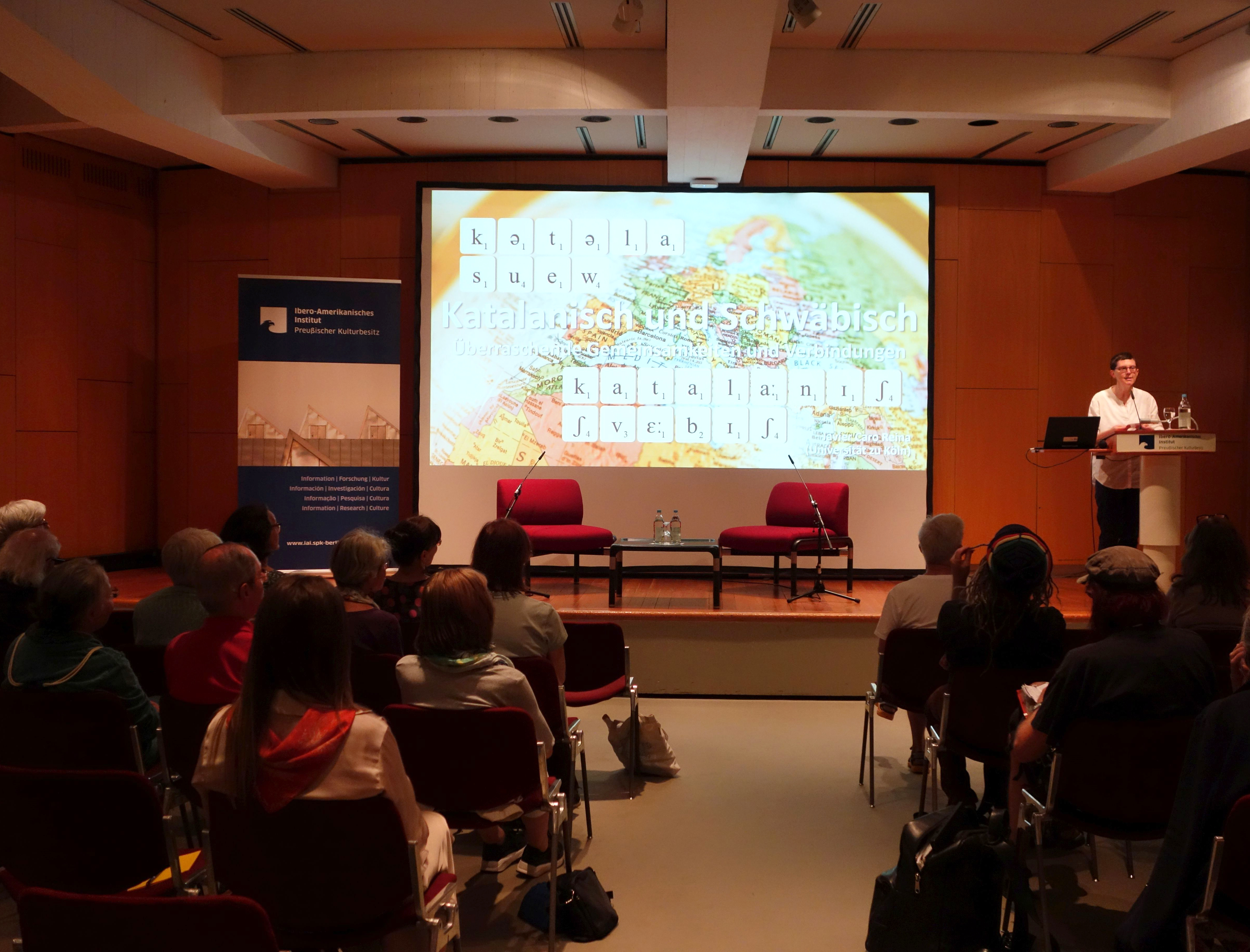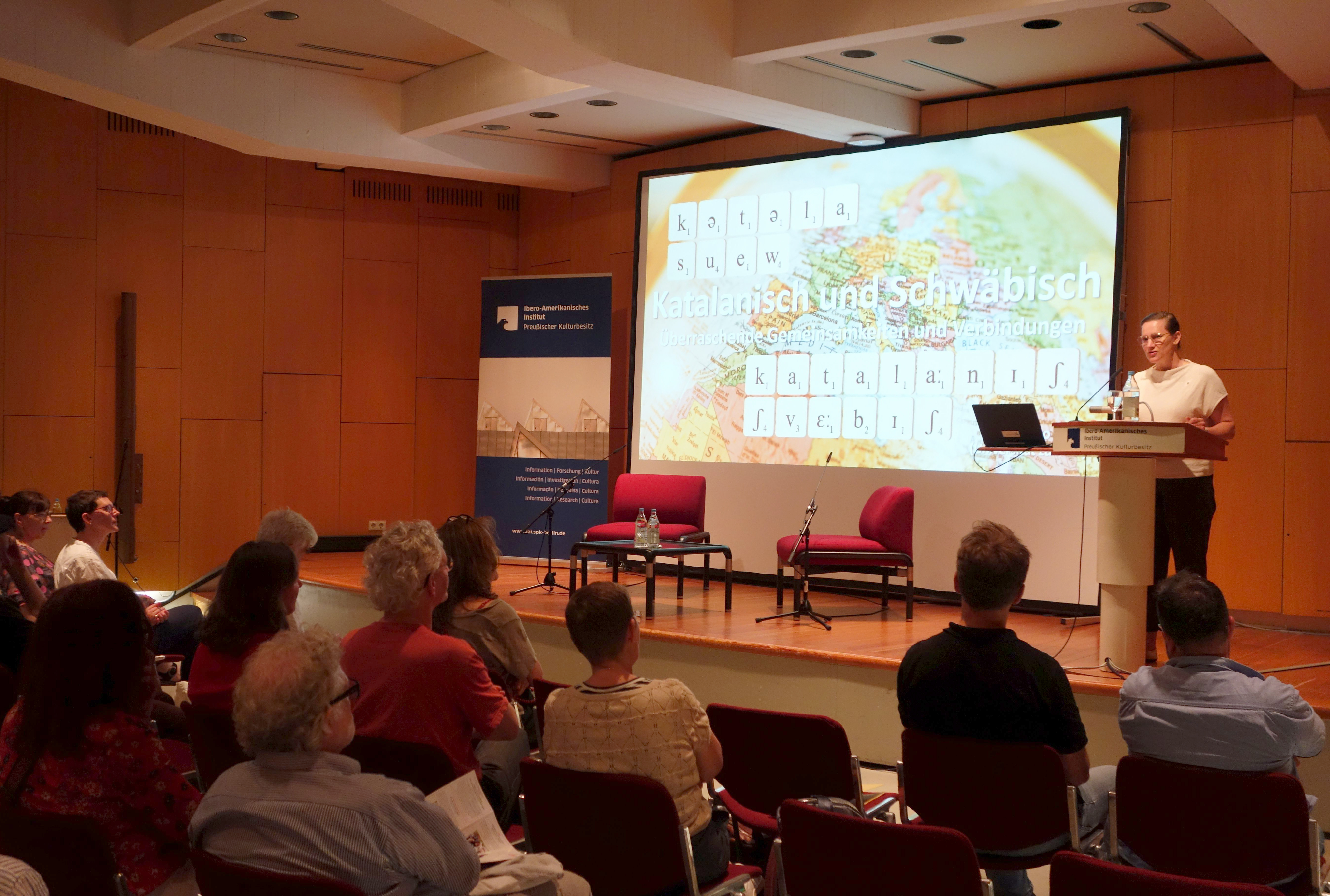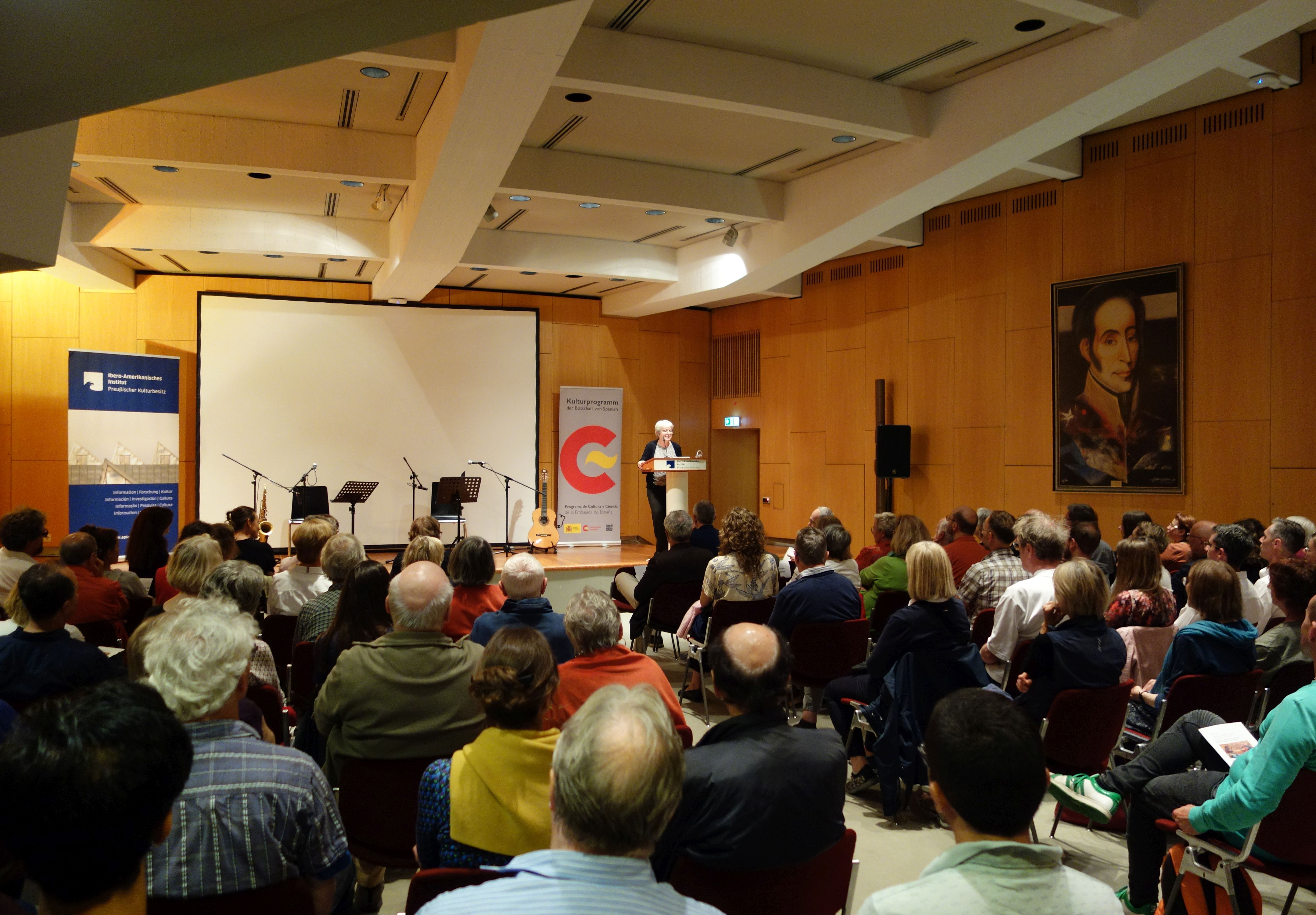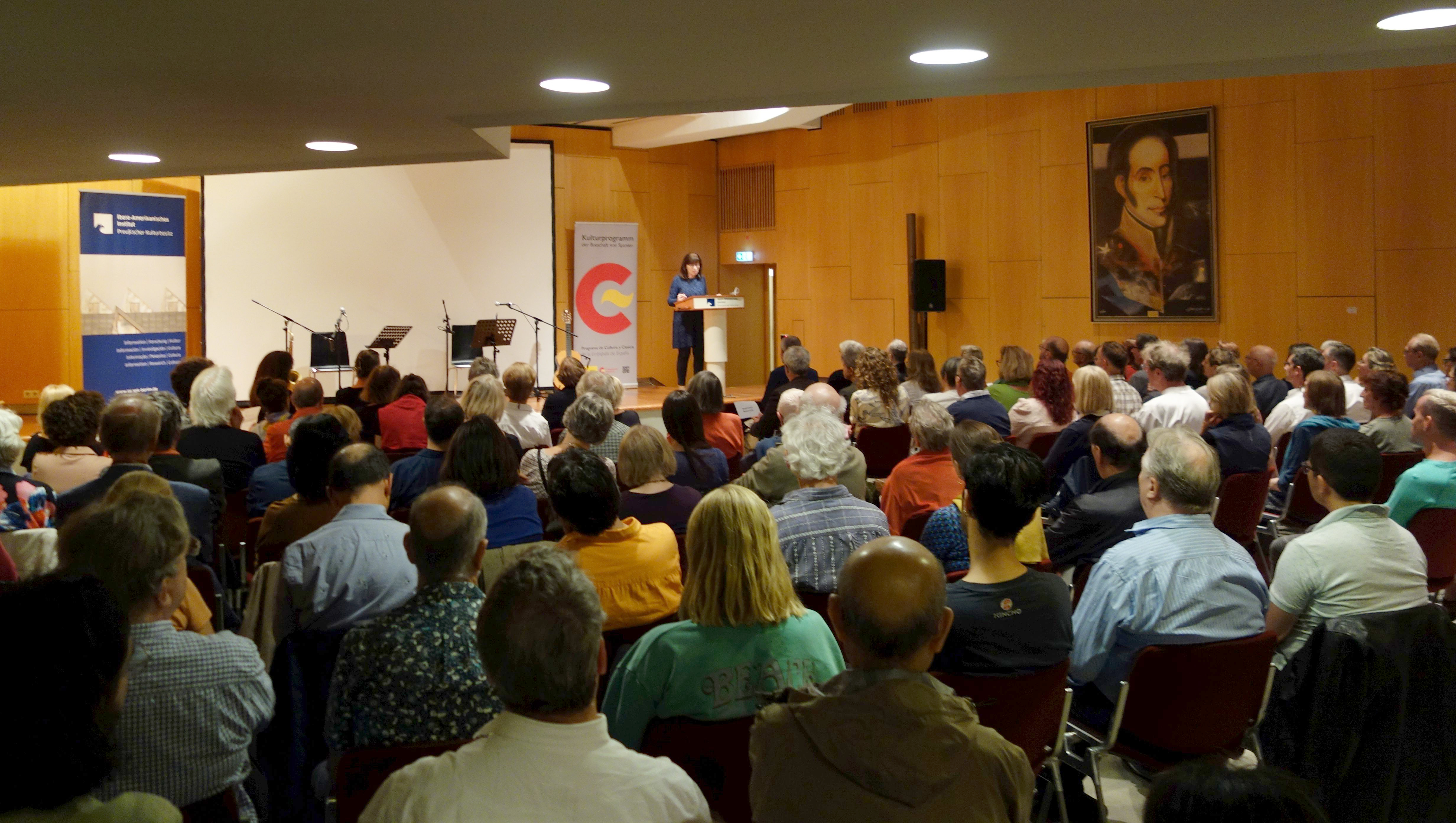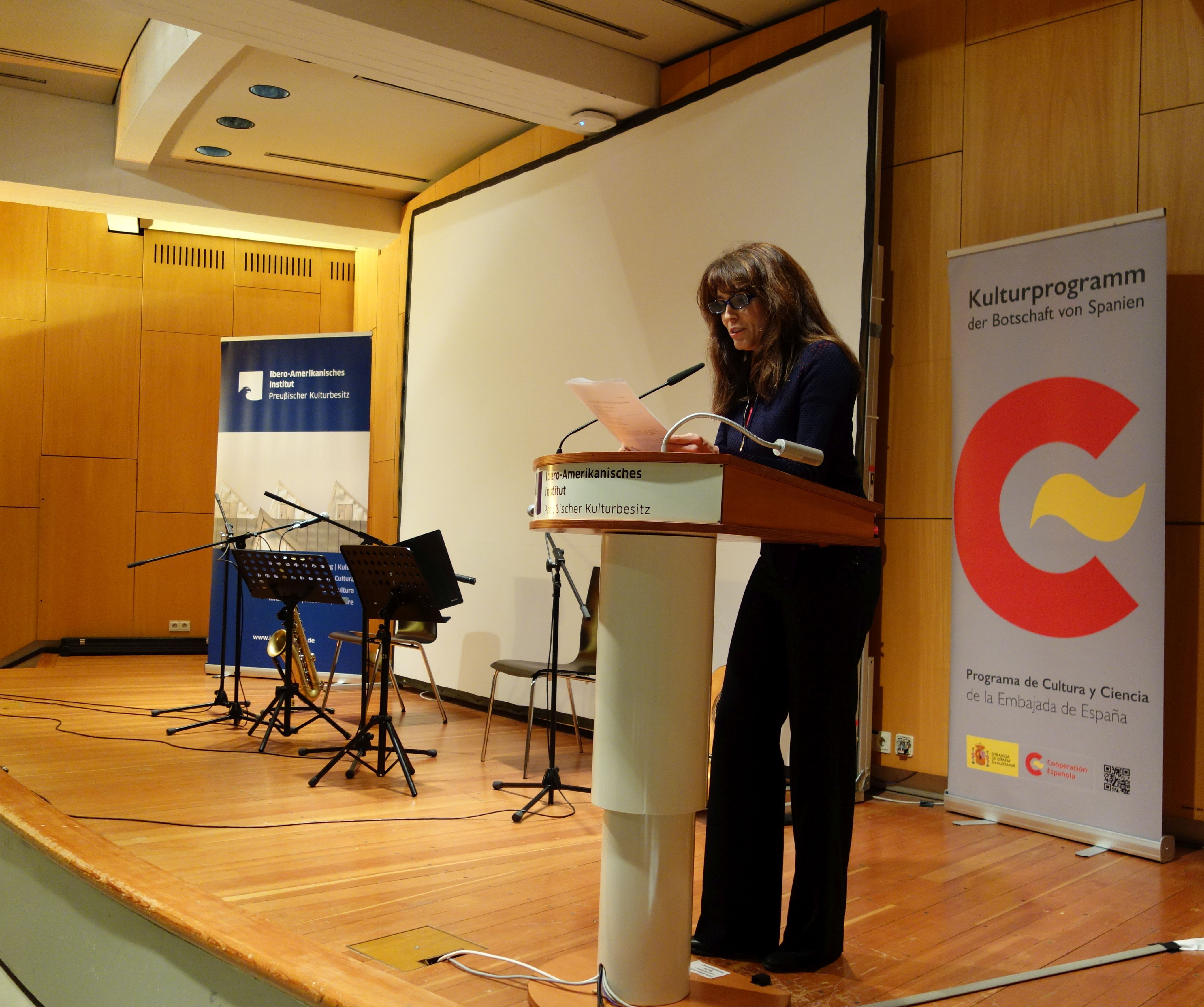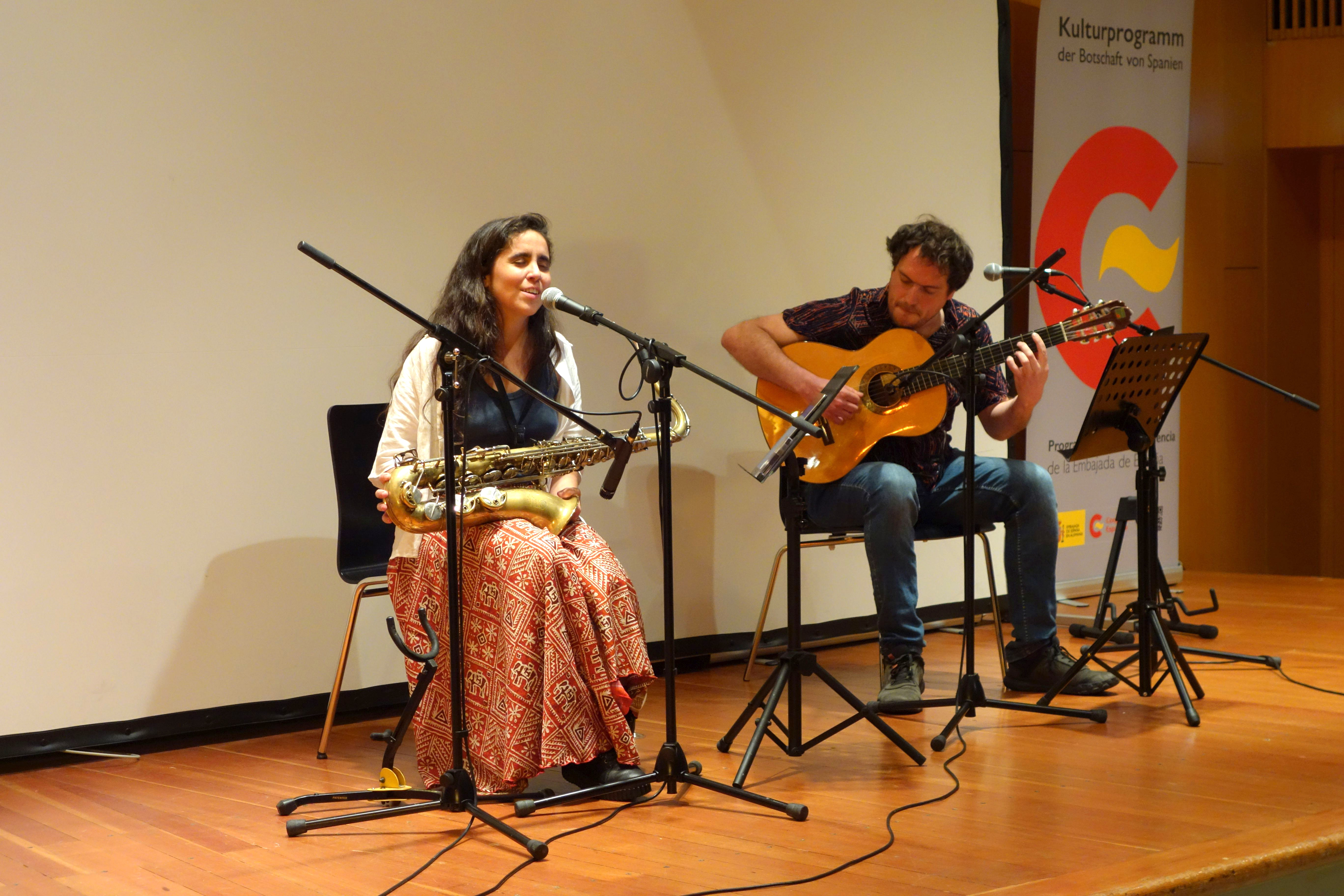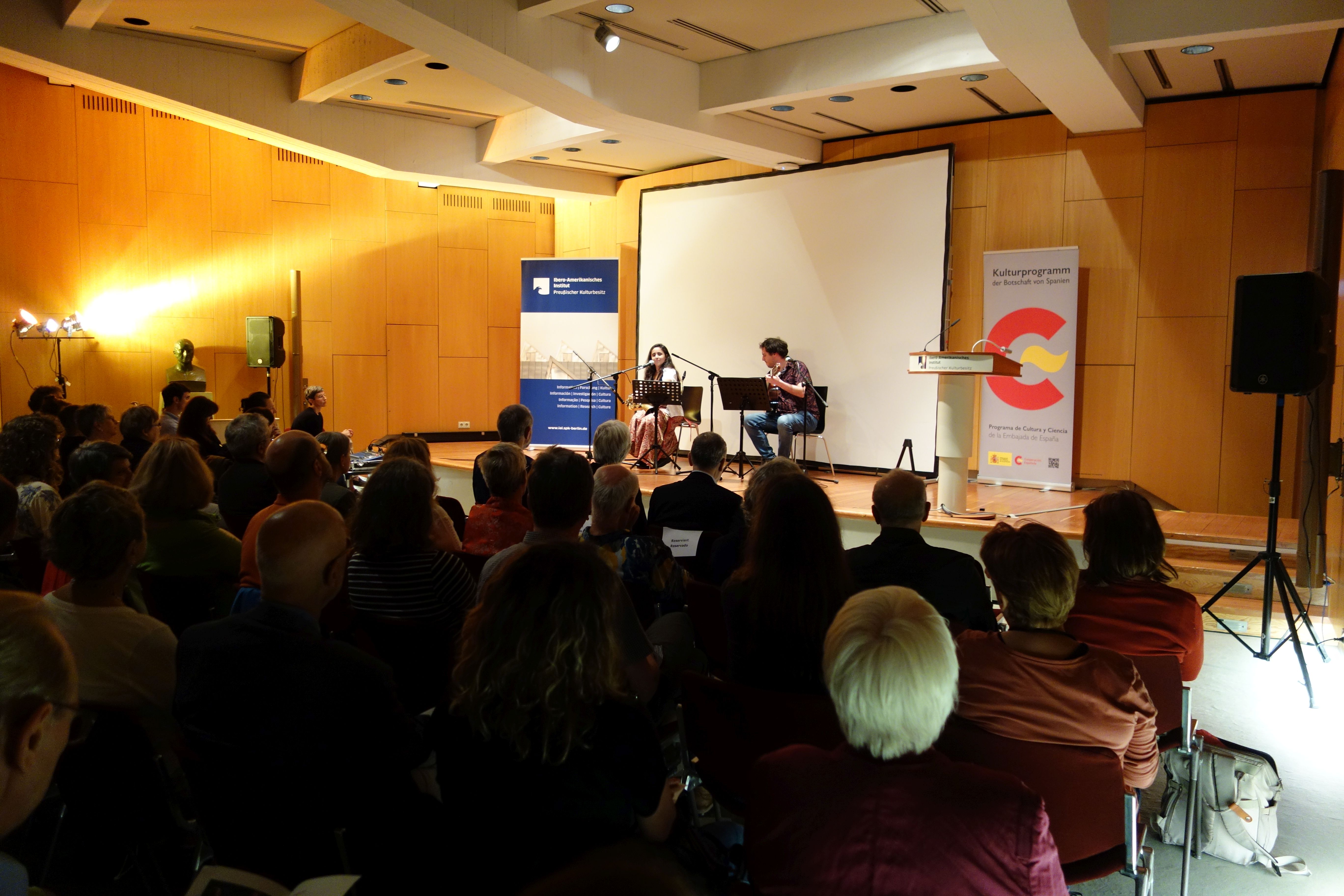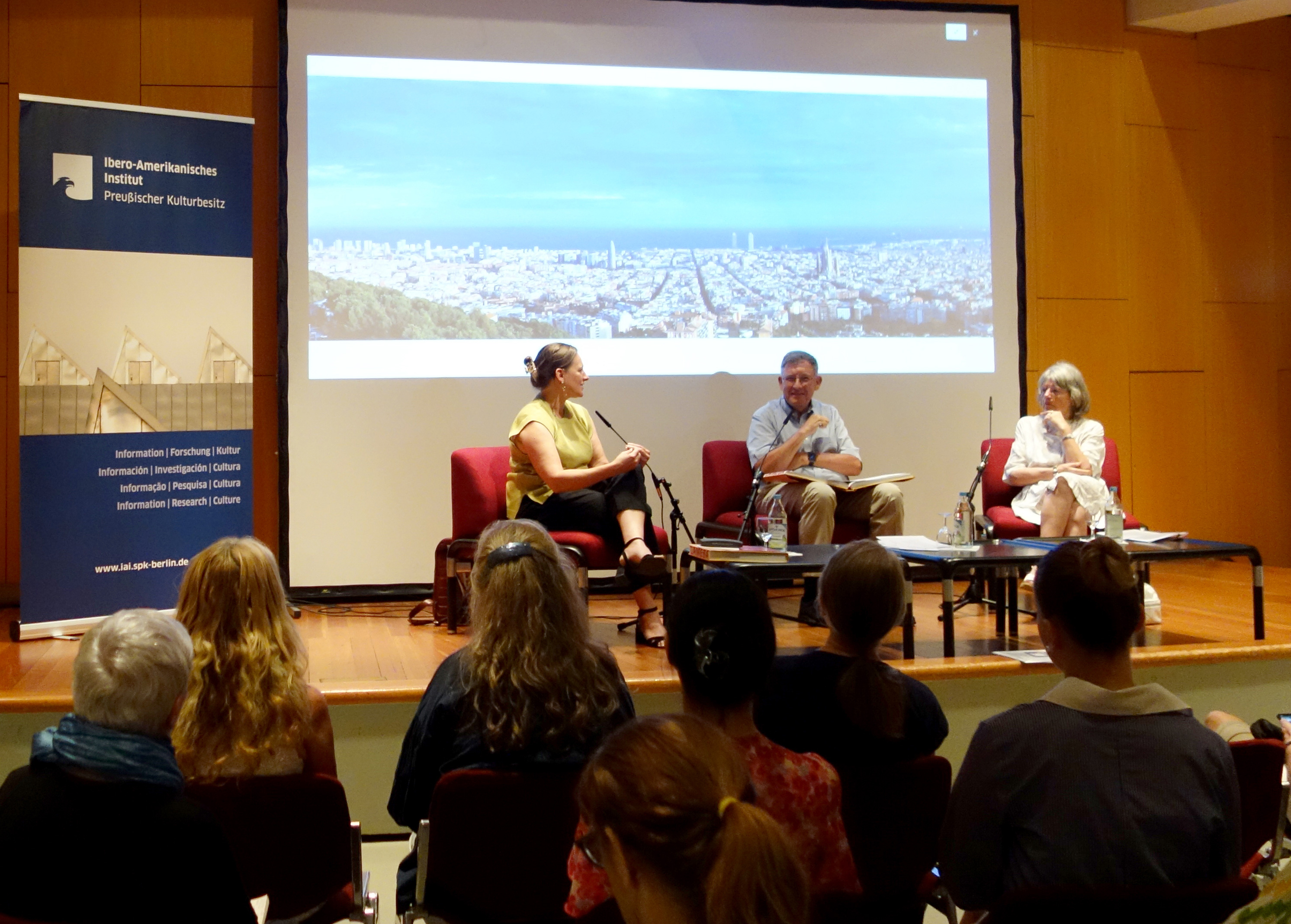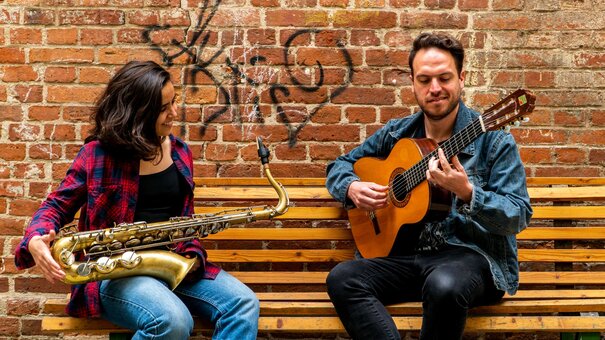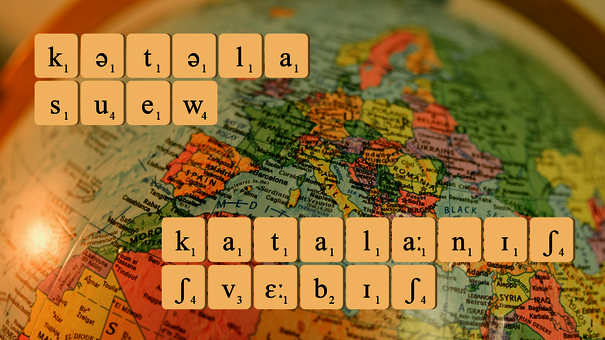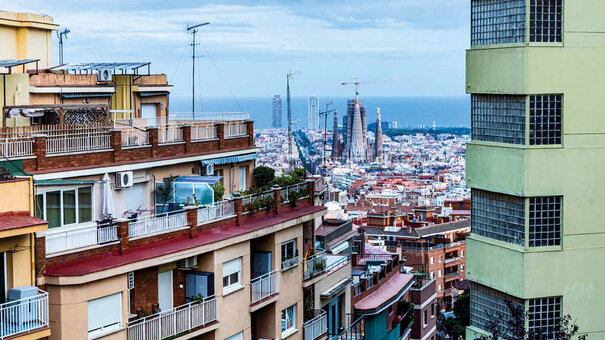Every summer, the Museum Europäischer Kulturen (external link, opens in a new window) (MEK, Museum of European Cultures) organizes the European Cultural Days and presents European countries, regions and cities. The Cultural Days are organized in international cooperation with various cultural institutions, associations, communities or the respective embassies in Berlin as well as partner museums in the European countries. This year, the focus was on Catalonia from June 15 to July 13, 2025.
Catalonia (Catalunya) is located in the north-east of the Iberian Peninsula on the Mediterranean coast. The historical interplay between political autonomy, cultural independence and oppression still characterizes the region today. In lectures and discussions, experts from the fields of science, literature and culture shed light on Catalonia’s eventful history, the importance of the Catalan language and the lyrical treasures of modernity and the present day. Catalan and mixed music ensembles combined their traditional musical roots with innovative elements and their own compositions, from folk music to electro.
This year’s Cultural Days were organized in cooperation with the Delegation of the Government of Catalonia to Germany (external link, opens in a new window), the Ibero-Amerikanisches Institut, the Embassy of Spain (external link, opens in a new window) and the Association of Friends of the Museum Europäischer Kulturen (external link, opens in a new window).
The Ibero-Amerikanisches Institut (IAI), which like the Museum Europäischer Kulturen is part of the Stiftung Preußischer Kulturbesitz (SPK, Prussian Cultural Heritage Foundation), has contributed three events to the series:
Lecture “Catalan and Swabian. Surprising similarities and connections”
Languages can have similarities that have arisen through parallel development and not necessarily through direct contact. This is the case with Central Catalan and Swabian. In his lecture on July 3, Javier Caro Reina (Universität zu Köln) explored these parallels. In doing so, he drew on the classification of languages into word languages and syllable languages. This is a typological approach to the structuring and organization of spoken language. Word languages such as German rely primarily on words as the basic unit of meaning, while syllable languages such as Spanish focus on syllables. The linguist explained how the perception of languages as hard and choppy (as in German, for example) or fast and colorful (as in the Roman languages) is closely linked to this different orientation. This is because in syllable languages, words tend to be slurred, whereas in word languages, words are pronounced clearly separated from each other with pauses. Interestingly, Catalan is more word-based and in this respect is somewhere between German and Spanish. Dialects such as Swabian are partly word-based, so that Swabian and Catalan converge to a certain extent. The lecture also showed parallels and similarities in terms of vocabulary and grammar. For example, the time is described in a similar way in both Swabian and Catalan: “three quarters of nine” or “tres quarts de nou” for 8:45 am. And when talking about a person, the first name is often combined with an article: “Der Peter” or “En Pere”.
The parallel linguistic developments have been followed by a variety of connections between the two regions right up to the present day, from the “Spanish March” founded by Charlemagne, which encompassed large parts of Catalonia, to the close cultural and economic ties between Catalonia and Baden-Württemberg today. Both are part of the “Four Motors for Europe”, a network founded in 1988 by four of the strongest economic regions in Europe: Baden-Württemberg (Germany), Catalonia (Spain), Lombardy (Italy) and Auvergne-Rhône-Alpes (France). These regions contribute significantly to the development of Europe. Trade relations between Catalonia and Baden-Württemberg go back many centuries, as Marie Kapretz, delegate of the Government of Catalonia to Germany, recalled in her introduction. For example, the textile fabric barchent was sold from Baden-Württemberg to Catalonia in the 16th century. And a German-Catalan dictionary for merchants and craftsmen dates from that time.
Then as now, people sought dialog and understanding between languages and cultures. Javier Caro Reina’s entertaining lecture offered useful tips for language learning for both Catalan and German learners. The audience, which included many southern Germans and Catalans living in Berlin, listened to his presentation with great interest.
Concert “Històries en blanc i negre que parlen de colors. Black and white stories that speak of colors”
The musicality of Catalan was on display at a concert by Catalan-Spanish singer-songwriter Ares Gratal on July 9. She even managed to get the enthusiastic audience to sing along – even without any knowledge of Catalan. The artist, who now lives in Berlin, is a singer, plays saxophone and accordion and composes. Following her passion for languages and literature, she has set poems by various poets to music: Màrius Torres, Joan Salvat Papasseit, Gemma Casamajó, Gabriela Mistral and especially the poems of her grandfather Ramón Martínez. Her style is characterized by many trends, from Catalan folk music to copla and Latin American music to jazz and improvisation. She was accompanied by the Chilean guitarist Pablo Arroyo.
Talk and reading “LAMEBA – My Barcelona. Approaches to a city”
Catalonia is so much more than its capital. But if you want to get to grips with the region, you can’t avoid Barcelona, as many people know Catalonia through Barcelona. A talk with a reading on June 26 took on the city.
Probably few cities in the world have been described and photographed so much. Barcelona is one of the most famous and most worth seeing cities in the world. However, the view of the camera and the traveler is often a quick, superficial view from the outside, which cannot capture what makes the lively metropolis special. Behind the shots of all-too-familiar facades and the same motifs, what makes this city special remains hidden. And this cannot be generalized anyway. Because the perception of the city is as diverse as its viewers. Its inhabitants have very different relationships with their city. The book “LAMEBA – La meva – Mi – Barcelona” is an honorable and exciting attempt to get closer to the metropolis. It brings together texts about their Barcelona by various authors. By people who live there, grew up there or have found their home by choice there. These contributions have been combined with photographs and sounds of the city, which can be accessed via QR code. In a reading of a selection of texts from the book and in conversation between the publisher Ronald Grätz and two of the authors – Michi Strausfeld and Marie Kapretz – the aim was to discover this city in a different way, not only by describing it, but also by trying to understand it.
Through the many personal stories, memories and observations, a picture emerges of a city that provides great inspiration for those who open themselves up to it. “Barcelona goes to your head like champagne”, as the author Klaus Mann described its multifaceted fascination. And a key insight from the discussion was that an open attitude is required when encountering other places and cultures in order to adapt previously formed ideas and hypotheses and to sharpen one’s own perspective on closer inspection. It was agreed that this was the prerequisite for understanding and communication. Otherwise, prejudices would arise. The role of culture and literature in particular in building bridges and contributing to understanding was also emphasized.
The European Cultural Days in Berlin
Europe brings together a wide variety of cultures, lifestyles and perspectives, and the MEK’s European Cultural Days are a constant invitation to get to know them. They aim to present typical features without perpetuating stereotypes. Together with other partners, the Museum Europäischer Kulturen and the Ibero-Amerikanisches Institut have put together a varied program of events, contributing their respective expertise, resources and networks and deepening their cooperation. The Berlin public showed great interest in Catalan culture and attended the events in large numbers.
The exhibition accompanying the Cultural Days “Vamos a la playa. Holidays under Franco” (external link, opens in a new window) can be seen at the MEK until December 7, 2025. There is also an accompanying program (PDF, 1.54 MB) (opens in a new window), (this file is not accessible).

